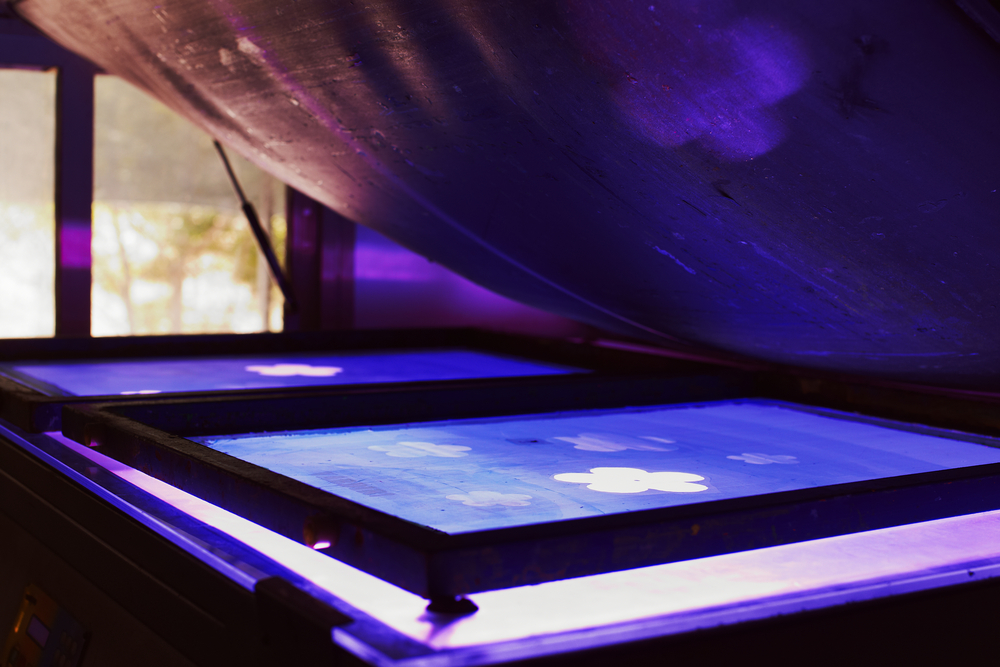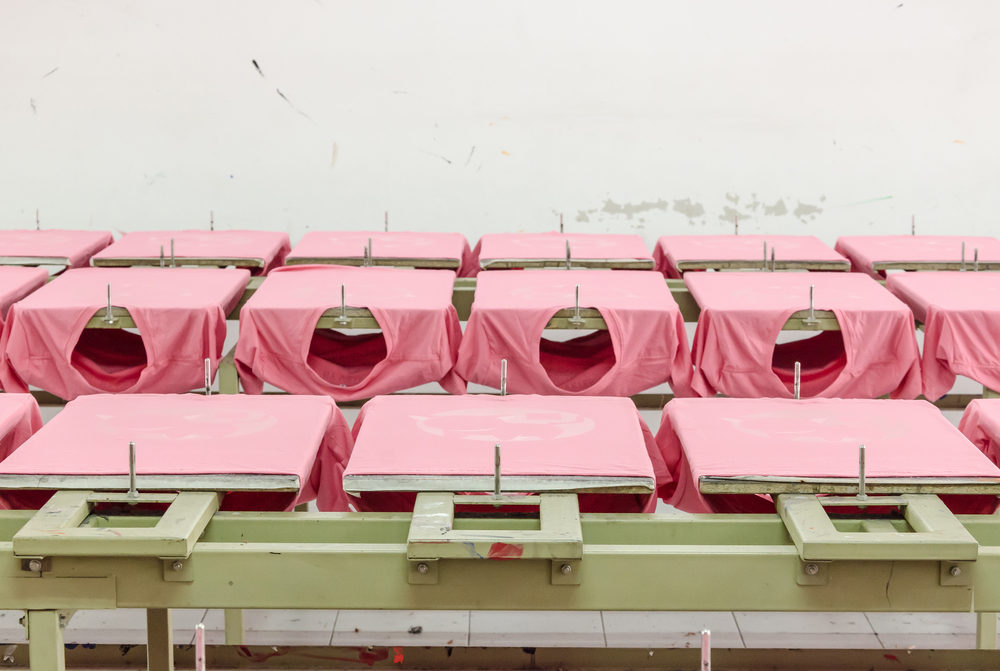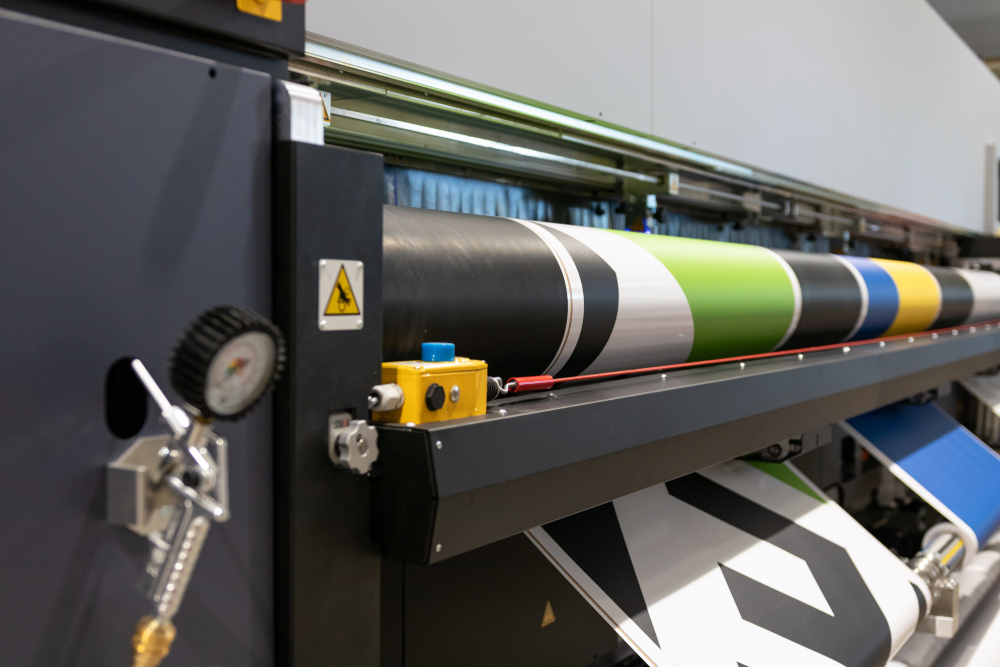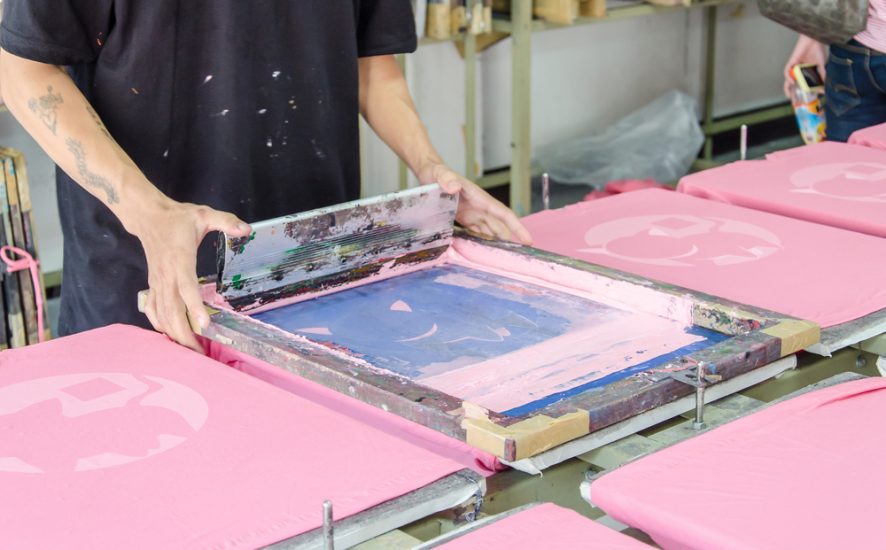Screen printing – also known as silkscreen – is arguably one of the most common processes used in the textile industry. As with all printing methods, it has its pros and cons. These can be weighed up to see if it is the best method for you. So, what is screen printing, exactly? How is it done? Well, read on to find out more.
How Does it Work?
When answering how does screen printing work, a stencil, some nylon mesh, and a squeegee don’t necessarily seem like the best tools for the job. However, when working out how to screen print shirts professionally, trust us, they are exactly the right ones. The screen printing process relies on that stencil to actually create your design.
The design you want to print is used to create a stencil. This is done using an acetate sheet and emulsion. You harden the stencil in the areas that you don’t want your design to appear. Think back to when you were a child and you colored in the gaps of your alphabet stencils. The empty spaces on the paper were the parts that you colored in to make the letter. The plastic parts are what were left uncolored, or in this case, unprinted.

How to Screen Print on Fabric
The stencil is then placed on top of a mesh screen, which will have the fabric underneath it. Everything needs to be completely flat. Ink is added to the top of the screen-stencil-sandwich. A squeegee is then used to pull the ink across the screen, which pushes the ink through the stencil.
This prints it onto the fabric below, where the gaps in the stencil are. Using this method, each screen can only be used for one color, although it can be used more than once. This makes screen printing very cost-effective for large print runs, especially as the image reproductions are amazing. It’s also great for creating sharp edges, and large solid blocks of color. Using multiple colors, however, is not done easily and creates a lot of waste. It’s a pretty labor-intensive printing method, so small runs aren’t ideal. For photos or for graduating colors, it’s not the best choice.

The Difference Between Screen Printing and Digital Print
Screen printing is a manual process, whereas digital printing involves the designs being processed by a computer before being printed. Although machines can be used for silkscreen printing, it’s still a process that isn’t computerized, which makes it different from digital print.
Screen Printing vs Vinyl
- Print Runs – Vinyl is better suited for small runs as there is less set up whereas screen printing is better suited for larger runs as it is more cost-effective. Although each color needs an individual set-up, each garment doesn’t
- Details – Neither of these methods is ideal for fine details. Both provide sharp, crisp edges, however, neither would be able to reproduce a photograph with great detail
- Colors – Screen printing allows you to mix up any color you like, but won’t be able to create a gradient color effect. Vinyl can’t blend colors and therefore has a smaller color palette
- Longevity – Vinyl will last years if the proper care instructions are followed, and screen printing can pretty much last a lifetime

Sublimation vs Screen Printing
- Print Runs – Screen printing is only a practical solution for large print runs and is definitely the better option for orders of 500+ prints, but sublimation works well for runs of most sizes
- Details – Screenprint produces sharp edges but the detail you can produce with sublimation is enough to reproduce photographs
- Colors – Screen printing will only print one color at a time, and can encounter alignment issues when layering colors on top of each other. That being said you can mix any color you like. Sublimation imprints all colors at the same time with no concerns about colors running, but you’re limited to computer-generated colors
- Longevity – Screen printing can last as long as the garment itself. But, it is more likely to crack over time than sublimated prints. This is because silkscreen puts the ink on top of the fabric. Sublimation will penetrate the fibers of the material
Screen Printing vs Direct to Garment
- Print Runs – Direct to garment (DTG) printing uses a fabric printer to transfer an image onto a textile rather than being a manual process. The lack of setup makes DTG more cost-effective for smaller runs
- Details – DTG uses a computerized image, so it’s great for photos or highly detailed designs where screen printing is somewhat lacking, however, you can’t create texturized effects with it
- Colors – DTG prints multiple colors at the same time rather than separately in layers, so is great for intricate or colorful designs. The silkscreen is much better for solid blocks of color as it gives a higher intensity, whereas DTG prints in multiple little dots
- Longevity – Direct to garment print uses inks that are more transparent than the opaque inks that screen printing uses. This gives the latter more washability, although you can pre-treat DTG garments which will increase their durability

Screen Printing vs Embroidery
- Print Runs – Embroidery is better for smaller runs, as well as for physically smaller designs (think pocket logos) whereas screen printing is much better for large runs or larger prints
- Details – Both methods will provide high-quality detailing for somewhat simple designs, however, neither option will print to photographic quality
- Colors – Embroidery will typically have no extra cost for multiple colors, and embroidery machines can often stitch in up to twelve colors at once. Silkscreen offers a wider range of colors since you can mix them as you go
- Longevity – Embroidery is generally more durable than printing, so is ideal for outerwear and workwear. That being said it requires a thicker material to start with, as those that are thinner can pull or snag as the needle goes through
So, What is Screen Printing?
So there you have it, the basics of screen printing. You can mix up any color you can imagine and nothing compares to it when it comes to super-large print runs. However, the set-up per print means that small print runs are just not practical, and since it only prints one color at a time, you could have alignment issues and color-bleeds if your design is multi-colored.


